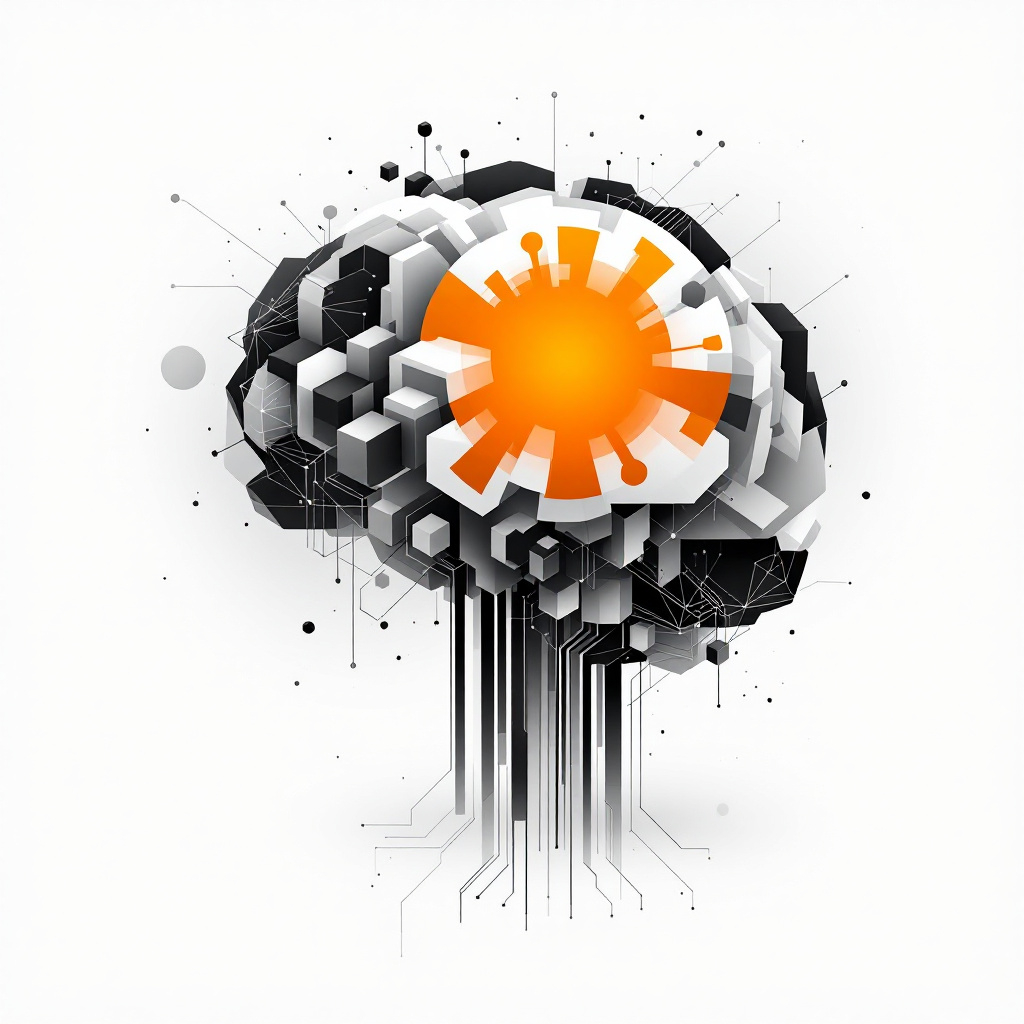.png)
How AI Delivers to the Bottom Line

The conversations about AI used to be so theoretical. We'd talk about potential, about future possibilities, about what AI could do. But today, if you're a business leader, the conversation has to shift. It's about how you fundamentally improve cost structures, drive radical efficiency, and unlock entirely new revenue streams. If you’re still grappling with the "how," you're about to get a clear picture.
My core belief is that it's not enough to just adopt AI tools. You have to strategically rethink how you operate. To truly harness AI's power, you need to revisit the very foundations of your strategic planning.
Let's start with the hard numbers. The financial sector, often a bellwether for technology adoption, is already seeing massive shifts:
- AI adoption in the finance industry jumped from 45% in 2022 to an expected 85% by 2025.
- AI could boost revenues in the banking sector by as much as $1 trillion by 2030.
- Generative AI implementation in financial services contact centers has led to customer satisfaction scores improving by 45%.
- Worldwide spending on Artificial Intelligence is forecast to reach $632 billion by 2028, with financial services expected to be the largest adopter.
The Strategic Foundation
For decades, leaders have relied on frameworks like Kaplan and Norton's Balanced Scorecard and Strategy Maps. These tools provide a brilliant, holistic view of strategy, linking financial outcomes to customer relationships, internal processes, and learning and growth. They help us understand the cause-and-effect relationships that drive performance. And that foundation is still incredibly valuable.
However, traditional strategy maps alone aren't enough for the AI era. Why? Because AI doesn't just optimize existing processes; it fundamentally reshapes them. It creates entirely new capabilities, redefines skill sets, and unlocks possibilities that simply didn't exist before. A static strategy map can't capture the dynamic, transformative power of AI.
This is where AI Strategy Maps come in. It's about adapting that foundational thinking with a new lens. Your AI strategy map must be:
- Truly Holistic: AI impacts every perspective of your business. It's not just a line item under IT. It touches financial ROI, customer experience personalization, internal process automation, and the continuous learning and growth of your workforce.
- Dynamic and Data-Driven: Unlike traditional maps that might be reviewed quarterly, an AI-powered strategy map can be continuously informed by real-time data. AI can validate your strategic objectives against historical trends and market forecasts, enabling more realistic target setting and agile adjustments. AI insights can literally show you new cause-and-effect relationships between your investments and your objectives.
- Focused on New Capabilities: It's not just about improving what you do; it's about identifying entirely new ways to create value that AI enables. This could mean predictive customer service, autonomous operations, or hyper-personalized product development.
AI's Direct Impact on the Bottom Line
Let's move from theory to real-world impact. Companies of all sizes are already leveraging AI to directly hit their bottom line.
AI as the Ultimate Optimizer for Georgia-Pactific and BMW
AI excels at taking on repetitive tasks, reducing human error, optimizing complex resource allocations, and enabling predictive capabilities that prevent costly failures before they occur. Take Georgia-Pacific, the massive paper products manufacturer. They've used AI to transform their operations. By implementing SAS Viya on AWS to monitor over 85,000 vibration sensors, they could predict part failures and electrical problems in their machinery. The result? A remarkable 30% reduction in unplanned downtime at facilities where these tools were deployed. That's millions saved by keeping production lines running.
In the automotive world, BMW showcases AI's power in quality control. They employ AI vision systems on their production lines for real-time defect detection. This leads to significantly reduced inspection time and, critically, catches defects much earlier in the process, minimizing expensive rework and waste. This isn't just about faster checks; it's about perfecting the product before it leaves the factory, saving massive costs down the line.
AI as the Growth Engine for ThredUp and Finance
AI enables hyper-personalization, accelerates product development, enhances customer engagement, and helps identify untapped market segments.
Even in the niche market of secondhand fashion, ThredUp has seen significant growth by leveraging GenAI. Their GenAI chatbot helps buyers assemble entire looks, acting as a personalized stylist. This innovative AI strategy directly contributed to a 32% year-over-year increase in their customer base.
Beyond fraud, AI is a powerful tool for customer retention. A $108 million financial institution used AI to predict customer churn in its auto insurance sector. By proactively identifying and targeting at-risk customers, they achieved a 12% increase in customer retention and a 3.2% monthly increase in average premiums by focusing on more profitable segments. This demonstrates AI's ability to boost customer lifetime value.
The Human Element
It's critical to remember that AI's impact on the bottom line isn't just about machines taking over. While AI handles the mundane, repetitive, and data-intensive tasks, it frees up human talent for more strategic, creative, and higher-value work. This necessitates a thoughtful redesign of roles and skill sets, fostering genuine collaboration between humans and AI for a greater collective output. Ultimately, leadership's role evolves into orchestrating this new human-AI synergy to maximize your organization's bottom-line impact.
Your AI Bottom Line Imperative
The evidence is clear: AI is no longer a future concept or an expensive experiment. It's a powerful, proven lever for bottom-line growth across every sector, from finance and retail to manufacturing and beyond. It’s about much more than just cutting costs; it’s about strategic value creation at every level of your organization.
Success in this new era starts with adapting your strategic framework. You need an AI Strategy Map that precisely links your AI investments to tangible outcomes across all dimensions of your business. This is the blueprint for a sustained competitive advantage.
Ready to transform your bottom line with AI? It’s time to move beyond the theoretical and build your own AI-driven path to growth.
Join me in my next webinar to find out for yourself.



%20in%20AI%20Is%20the%20Real%20Competitive%20Edge-1.jpg)



